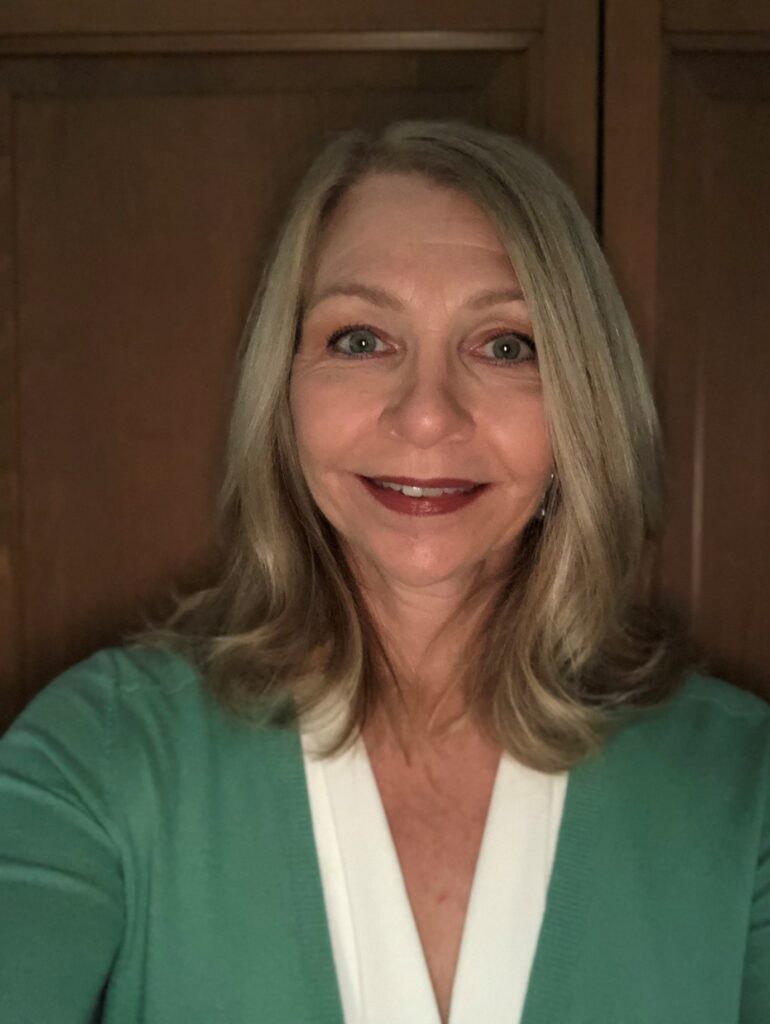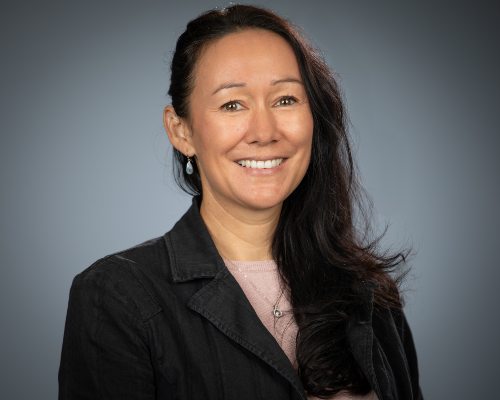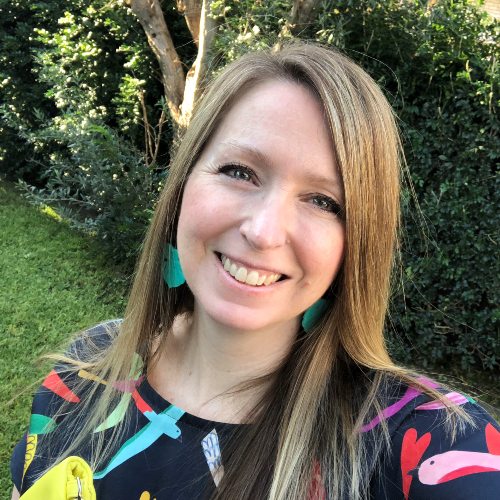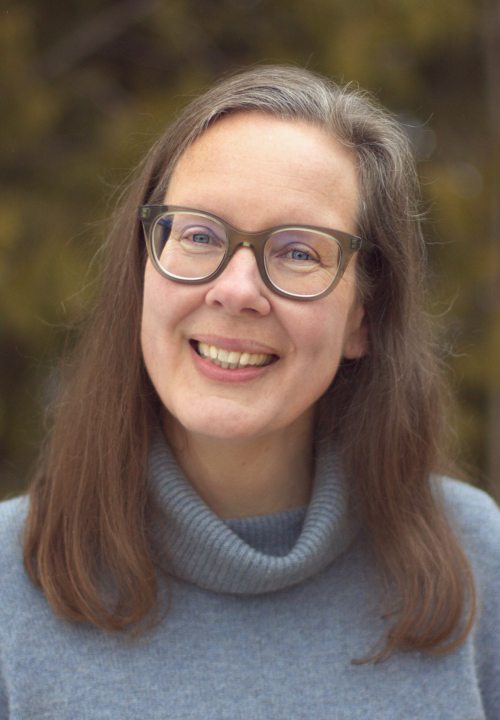Keeping communities and the environment safe with sustainable water solutions
In celebration of International Women in Engineering Day on June 23, we are sharing how our women engineers #MakeSafetySeen by demonstrating strong safety principles in their work and committing to deliver a safer world through their engineering expertise.
Follow this year’s conversations on LinkedIn and Twitter, as well as the AECOM Blog.
Get to know some of our engineers from our Water business line as they share how they are delivering sustainable water solutions by prioritizing safety for the community and the environment.
Erika Bender, Environmental Engineer (Denver, Colorado, United States)
“I provide condition assessment and alternative analysis for water infrastructure, such as treatment plants, to ensure they are fit for purpose, now and in the future. This involves site inspections to visually inspect the assets, determine their lifespan, and recommend any corrective measures to ensure they produce clean drinking water and safe discharges.”

After a stint as an intern in 2018 in our Ohio office, Erika joined AECOM full time in the Colorado office in summer 2019. She immediately became involved in the Lead Service Line Replacement Program through which Denver Water is replacing customer-owned lead service lines (the pipe that brings water from the water main in the street to the plumbing in the home) with copper service lines.
Denver Water estimates there are 64,000-84,000 properties that have lead service lines in its service area. To better understand the magnitude of the works, Erika worked with machine learning to support the comprehensive inventory of known and suspected lead service lines. She also applied a prioritization tool to understand who are most vulnerable and at-risk from lead exposure, underserved areas, and planned construction activities.
Kuang Ping, Executive Director, Water and Urban Development (Singapore)
“I am passionate about advancing sustainable solutions that contribute to increased water security. I apply my knowledge of advanced water and wastewater treatment technologies to optimize every drop of water to meet the demands of Singapore’s growing population.”

Kuang has almost 24 years’ experience in advanced water and wastewater treatment technologies, including membrane, water reuse, desalination, UV disinfection and advanced oxidation projects. She was the project director for various industrial and domestic water and wastewater treatment plants, including the iconic Keppel Marina East Desalination Plant in Singapore, and the Kranji Water Reclamation Plant (WRP) relocation feasibility study.
She is also a certified WHO Water Safety Plan trainer and has delivered training workshops in Singapore and China to professionals involved in the management of drinking water safety.
Lucy Pugh, Industrial Water and Wastewater Technical Practice Director (Grand Rapids, Michigan, United States)
“I provide condition assessment and alternative analysis for water infrastructure, such as treatment plants, to ensure they are fit for purpose, now and in the future. This involves site inspections to visually inspect the assets, determine their lifespan, and recommend any corrective measures to ensure they produce clean drinking water and safe discharges.”

As industries seek to be better stewards of water and the environment, Lucy and her teams are helping industrial clients make the most of their valuable resources through water use reduction and zero-liquid discharge, which involves treating wastewater to a level that it can safely be reused in the clients’ operations.
One of Lucy’s recent projects involved developing a treatment process to remove radionuclides and other chemical constituents from wastewater that will be produced from a new low-level radioactive waste disposal facility. Since the radioactive waste disposal facility hasn’t yet been constructed, Lucy and her team prepared simulated wastewater to perform testing and selection of the best process for treatment. This activity involved bench-scale testing in a treatability lab followed by larger-scale and longer-term pilot testing. Lucy and her team then designed a full-scale treatment system including chemical precipitation, membrane filtration, activated carbon and ion exchange.
Nicky Lee, Team Leader, Water Resources (Melbourne, Australia)
“As the team lead for the water resources team in Melbourne, Australia, I focus on flooding, drainage design, water sensitive urban design, water quality and integrated water management. My technical area of expertise is assessing the impacts of industrial and wastewater discharges into surface water bodies. I make sure the level of contamination entering streams and rivers is minimized to an acceptable level based on the water’s use (i.e.: drinking, recreational or ecological purposes).”

Nicky was recently involved in a project to transform an abandoned mine site into a pumped hydro storage facility in Queensland. The plan was to pump water between two adjacent mine shafts, one higher than the other, to generate electricity. However, the mine wells contained elevated levels of contamination, meaning if the water needed to be released into the nearby stream it could pose an environmental and human risk. Since the facility would operate as a closed-loop system, the only time the water storage capacity would be exceeded would be due to a heavy rainfall event.
By looking at the dilution rates, she determined the water could safely be released during a storm as there would be enough flow in the stream to dilute the contaminants down to an acceptable level. The state provided environmental approval for the scheme based on the minimized risk to human health and the environment. In using her in-depth knowledge of industrial and wastewater discharges into surface water bodies, Nicky unlocked the mine’s potential to generate clean energy.
Sabah Fanaiyan, Geotechnical Engineer & Project Manager (Orange County, California, United States)
“In my role, I provide geotechnical design, inspection, and construction support for large infrastructure projects, such as dams, levees, and reservoirs. This includes coordinating geotechnical field investigations, seismic studies, and laboratory testing to inform safe dam rehabilitation and expansion programs.”

Recently, Sabah provided geotechnical engineering services for the Trampas Canyon Dam and Reservoir, an earth fill dam in Rancho Mission Viejo, California. The project involved converting an existing tailings dam into a recycled water supply reservoir to provide seasonal and operational storage for the district’s existing and proposed recycled water system.
Sabah and the project team undertook soil and rock borings, seismic surveys, and laboratory testing to understand the condition of the dam. Equipped with this information, she then designed the new infrastructure required to transform the asset into a recycled water reservoir and increase its capacity — including water transmission pipelines, a higher capacity spillway, pump station, drainage facilities, and water quality systems.
By repurposing the reservoir and increasing its storage capacity to 1.6 billion gallons, the project is contributing to a sustainable future water supply for Southern California and reducing the areas reliance on imported water.
Zena Smith-White, Associate Director Water Planner (Sydney, Australia)
“As an integrated water planner, I consider the whole urban water cycle, from supply of safe water for drinking and other uses, through to treatment, safe reuse, and disposal of wastewater to protect the environment, and the role of water to provide liveable spaces for communities. I seek to understand how urban water systems operate now, and when impacted by future population growth, aging assets, and climate change. This understanding allows me to identify how and when systems will need to adapt in the future to continue to safely service communities and protect the environment.”

Zena was involved in delivering a project that integrated drinking water, wastewater, recycled water, and stormwater services within a growth area of Western Sydney to develop an adaptive water servicing plan for the next 30 years.
A key focus of the plan was the Greater Sydney Commission’s (GSC) ‘Parkland City’ vision for Western Sydney, based on a network of healthy waterways, green parks and tree canopy to provide urban cooling and amenity, which required more water than a traditional approach.
The integrated water solution included both increased recycling of wastewater along with harvesting stormwater run-off for beneficial use. This would reduce the volume of run-off reaching the local waterway, where it could impact the water quality. By keeping the water in the landscape, it can be used to support green spaces, tree canopies, and urban cooling thereby improving liveability in the new communities.
Her holistic view of water and reuse within urban environments ensures the value of water is optimized within integrated water plans.
Quirien Muylwyk, Technical Director, Water Quality (Ontario, Canada)
“I consider water quality from source to tap. I work with water systems to manage toxins in their water sources, plan for treatment to control pathogens responsible for waterborne diseases and advise on how to optimize water quality in drinking water distribution systems. My role involves anticipating threats to water quality and supply, managing risk, and helping water systems strategically plan for future investments.”

Over the course of her career, Quirien has seen the focus of water quality expand to include the role water plays in helping communities thrive. The quality — and reliability — of drinking water systems goes beyond public health considerations and extends to its influence on economic development, community resilience and social equity.
Reliable, good water quality benefits all members of a community. It helps to reduce disparities in health outcomes, promotes equal opportunities for economic development, and fosters social cohesion within communities. Likewise, water quality is essential for various economic activities, including agriculture, manufacturing, and energy production. Industries must be able to access adequate and dependable water supplies for their operations. By maintaining high water quality standards, communities can attract businesses, support job creation and foster sustainable economic growth.
Quirien is currently supporting the City of Ann Arbor in Michigan, U.S., to develop a strategic plan for rehabilitating the City’s water treatment plant. The project aims to ensure reliable, high-quality water for generations to come. Quirien is leading a team that is advising on regulatory requirements, treatment for contaminants of concern, cost and maintenance of treatment.






